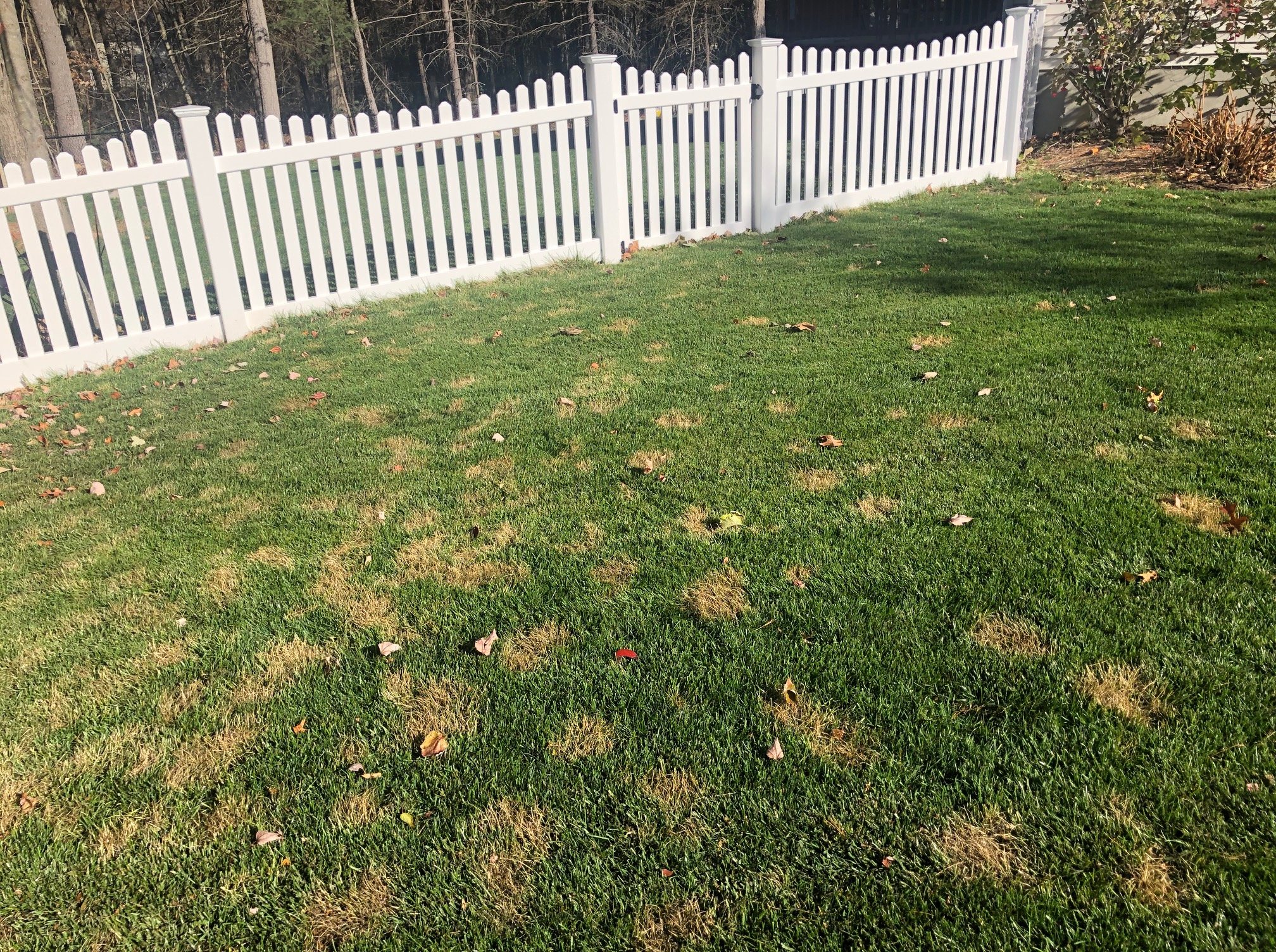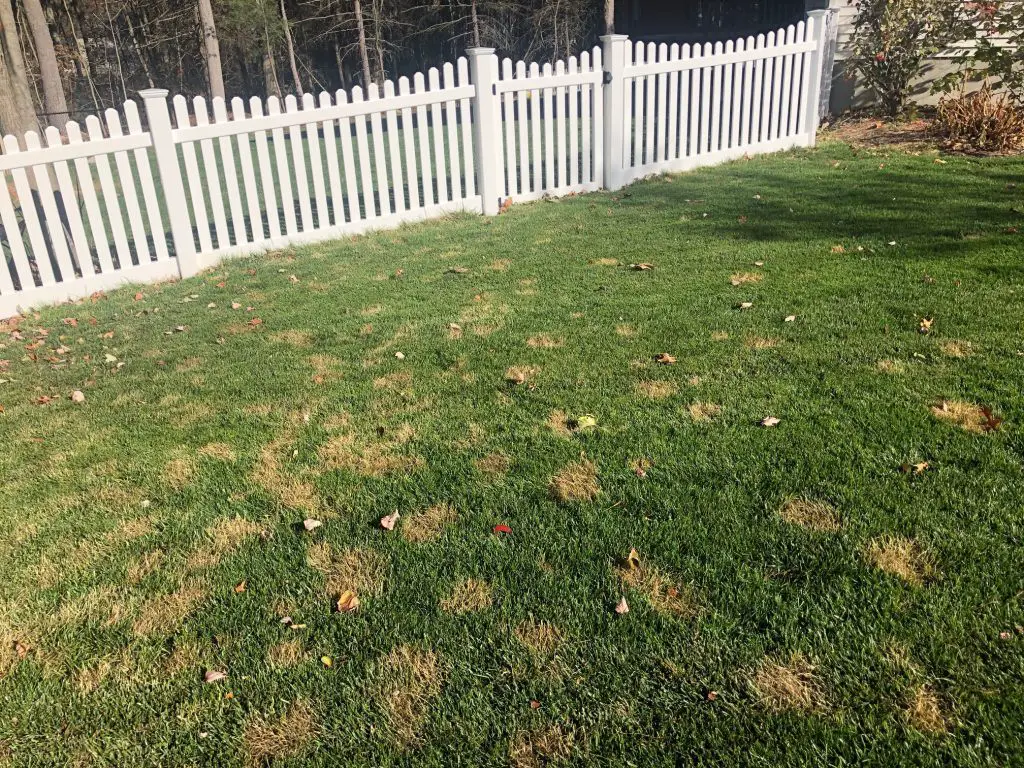Are you seeing brown spots in irregular circular patterns on your lawn? Seeing spotty leopard prints and footprint-like spots in your grass after an early snowstorm or frost conditions? It’s not brown patch or leaf spot lawn disease. This anomaly is called “chilling injury”, and the reaction occurs with colder temperatures and heat dissipation. This does not happen often, but we witnessed this phenomenon this past week here in New England (November 2020).
As freezing temps crept in during the week of Halloween 2020 – coupled with well over an inch of snow in some areas – the cool-season grasses all across New England were caught off guard. Lawns were still actively growing leading up to the cold and snow and did not have enough time to get acclimated to the colder temperatures and sudden extreme winter conditions.
This “chilling injury” leaves the grass blades damaged. The cause of the leopard-like spots is unknown but creates some very interesting conversations and theories. UMass Center for Agriculture, Food and the Environment had this to say about the patterns:
“It is likely due in part, to how turbulent air moves across the surface, affecting where cold pockets of air settle to injure turf.” – Umass
The crowns of the grass should be OK, so these spots should not need extensive repairs. If there are continued warmer temps, the grass may have enough time to recover in the fall. If it doesn’t, the turf should bounce back just fine in the spring.
“Crowns remain healthy, and therefore blighted foliage will grow out.” – UMass
As previously stated, this is damage to the grass blades from cold temperatures. It is not a fungus or disease. As colder temperatures set in more consistently, the rest of the lawn continues into dormancy and the color of the “chilling injury” spots should even out with the less green dormant turf.
We’re experiencing 60s and 70s here in Massachusetts this weekend. Luckily, I only have a small patch of chilling injury on the back side1s of my house (image above). I applied a foliar application of Kelp4Less Green Lawn & Turf at 1 oz. per 1,000 sq. ft. and will take pictures daily to see if any of the spots repair or grow out quicker.
I hope this helps answer why you’re seeing these leopard prints and brown spots looking like footprints in your lawn. Post your initial thoughts and theories of “chilling injury” below.
Sources: UMass Center for Agriculture, Food and the Environment




